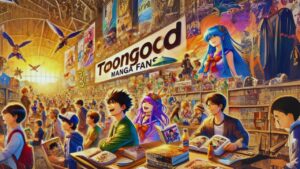The Feast of Dionysus is a marvelous piece of art that keeps the audience’s attention with its storyline and the colors used and, of course, the Greek Gods reference. Because of its profound popularity the painting has remained the focus of target to art lovers, historians and even people who have mere interest in the art.
For its iconographic and artistic values, for its relation to the cultural patrimony of ancient Dionysus, the wine god it remains an eternal marvel.
What then is the Feast of Dionysus Painting?
The painting in question resembles the scenes of the Feast of Dionysus devoted to Dionysus – the ancient Greek wine god linked to the other aspects of life’s ennobling potion. The subjects depicted may consist of: Bacchantes—or followers of Dionysus accompanied with satyrs, or stones illustrating mortals celebrating within forests and plains. Due to its images of music, dance and plenty of food and drink, the painting represents joyful spirit and people’s unity.
This is the beauty of the painting in a way of portraying the life’s expressions of Dionysian festival of wine and divine intoxication. Analyzing the sources, critics have pointed out that they have presented realistic and mythological topics in the artwork at the same time.
Who Painted the Feast of Dionysus?
Despite the uncertainty of the origin of the Feast of Dionysus painting, this theme underwent a vast representation by great artists in history. Prominent works in this topic are by Nicolas Poussin and Peter Paul Rubens since both artists were influenced by classical mythology and renaissance period.
Poussin’s formal clear shapes fantasy opposes Rubenz’s message which is easy to read on such images – harmony and lively energy of colors.
Nonetheless some art historians assume that there could be other examples of the painting of the Feast of Dionysus by unknown artists probably belonging to the Baroque or romantic periods.
It is for this reason that these works, many of which are now preserved in the privatized galleries or the better defined museums, elicit strong desire to know about the real subject behind the painting and about the artists who painted this myth of Dionysus.
The Feast of Dionysus depicted in Louvre Museum
An earlier perception of the Feast of Dionysus painting is one that is located in the Louvre Museum in Paris. This version can be considered as the best example of how mythology tells stories through arts. It depicts the deity Dionysus in its central position, some surrounding followers such as satyrs, nymphs and common mortals participating in the procession with the canopy of grapevine overhead.
Here visitors can learn more about the importance of Greco-Roman mythology within the framework of European art and get to know how Europeans continue socializing the treasures of the mythology in their art for centuries.
Art both in details and in the interpretation of feelings – joy, ecstasy combined with a sense of divine – are noticed by the viewers of the Louvre. Such works are valuable thanks to the museum’s efforts to keep them safe for the future generations of art lovers, which is the case of the Feast of Dionysus painting.
Who and for what the Feast of Dionysus Painting was Painted
The painting under analysis is the result and based on the interpretations of the ancient Greek rituals connected to Dionysus, especially the Dionysia festival. In Athens the cult of the god was commemorated through drama, song, and banqueting at this festival.
The thematic components are built on the Dionysian spirit, the main concept of which is creative passion and free emotions.
In scoring their work of art under the feast of Dionysus theme, artists read more and adapted from the script and sculpture. It also went to the physical as Dionysus was considered to be associated among other things with vineyards, forests, and the woods and changing seasons.
Thus the painting in its integration of mythology within people’s lives presents a timeless analysis of celebration and continues the age-old narrative of the integration of art and nature.
The Feast of Dionysus Painting Original
Identifying the older Feast of Dionysus paint remains to be a hard affair because of the agility in revamping the artwork through different artists. In this connection, the meaning of ‘originality’ regularly alludes to the visualization of the aspect of withering associated with Dionysus in a painted tradition that has been identified to date.
According to some art historians it originated from several parts of Europe in the early renaissance, when interest in classical antiquity revived. The first sculptures may have been derived from using inspiration from the Greek pottery and frizes containing scenes of Dionysus.
Despite lack of modern consensus on the original piece, the painting’s themes and elements remain part of mainly the contemporary artists’ reference point. Such continuity simply points to the fact the world is intrigued with Dionysus and the instinct of enjoying life.
Read also: Christina’s World Painting: A Masterpiece of Realism and Cultural Resonance
Description of Artistic techniques on the Painting: Feast of Dionysus
Many techniques can be seen in the Feast of Dionysus painting that contributes to the art work. These include:
Use of Light and Shadow
Light and darkness come into play which help to open space and emotions, making the main characters stand out and emphasizing nuances of motion.
Vibrant Colors
Bright green, gold and red represent not only richness of tropics that can be felt in Guatemala, but also richness of the feast.
Dynamic Composition
Compositional elements of the painting regulate the gaze across the plane of the picture and produce an impression of dynamics and gaiety.
Symbolism
They use grapes or vine motifs, wine cups, and instruments of music as motifs associated with Dionysus matter as added values to the story.
These techniques demonstrate how many years of effort the artists took to make the Feast of Dionysus memorable and popular.
Read also: The Art of Finger Painting: A Journey Through History and Creativity
Cultural Significance of the Feast of the Gods painting
List Of References:
The subject of the painting The Feast of Dionysus is related not just to art, however also to understanding, mythos, and fellowship. Dionysus as a symbol of creativity and change will continue to be relevant to audiences of different generations and nationalities.
The ассеnsе of glee in the painting promotes the very centripetal values of the Dionysia carving and brings to our mind the unchanging valedictory secret of the human race- the art of narrating.
Today it became the subject of paintings, sonnets, and songs and remains one of the brightest and most important creations of the artists and authors of the epoch. Its subjects are joyous and unifying, giving the audience a small glimpse into the tradition and culture of Ancient Greece mythology.
Conclusion
The Feast of the Gods is in factual sense, much more than an artwork; it is an ode to human endeavour and the perennial appeal of mythology. No matter looking for the painting’s stylistic devices or going through its genesis and meaning, the painting encourages people to join the fun and freedom of creating something.
The following is a record of the journey of the artwork beginning from the original painting of Feast of Dionysus to the status of the artwork in the Louvre museum proves that the legend of Dionysus still goes on in the artwork.










1 thought on “The Feast of Dionysus Painting: A Celebration of Art”